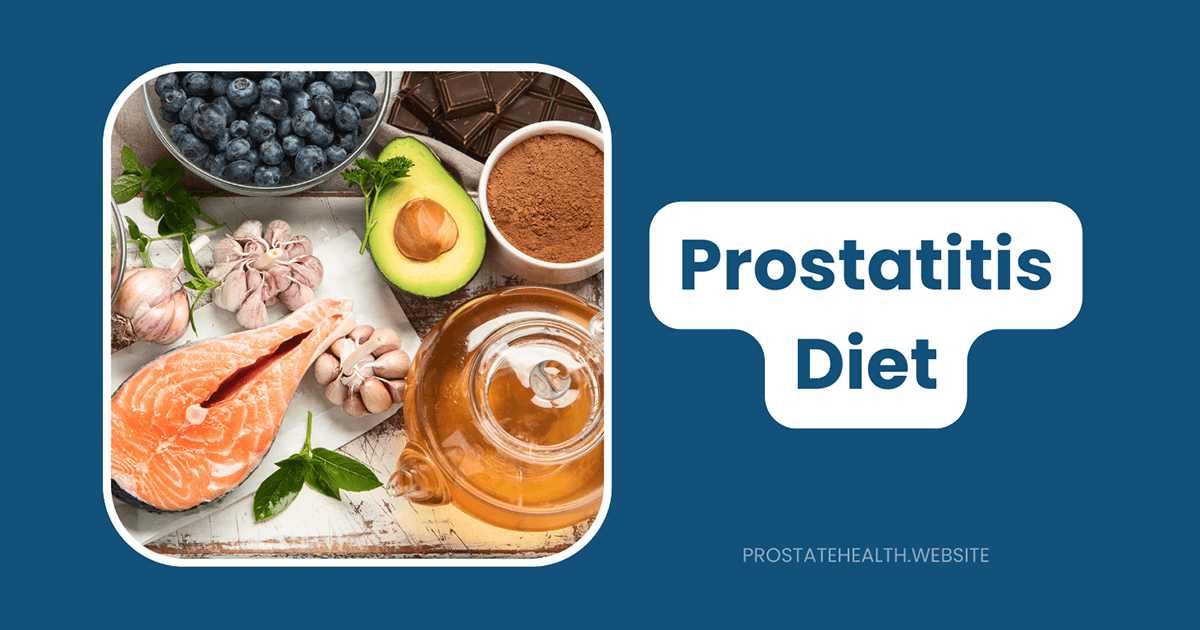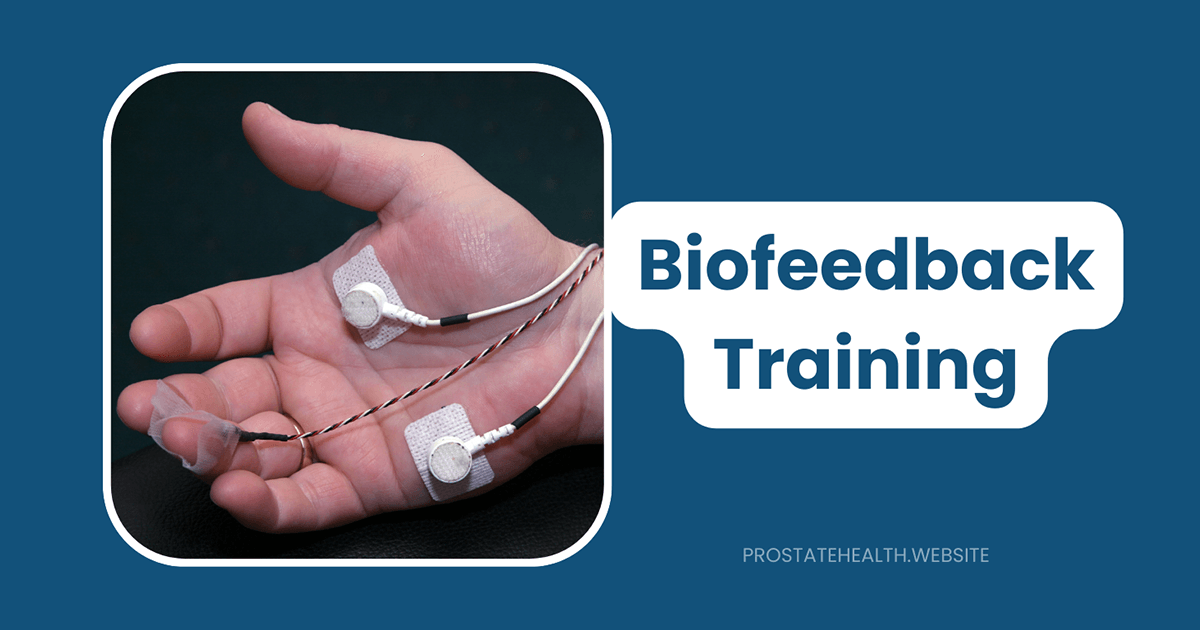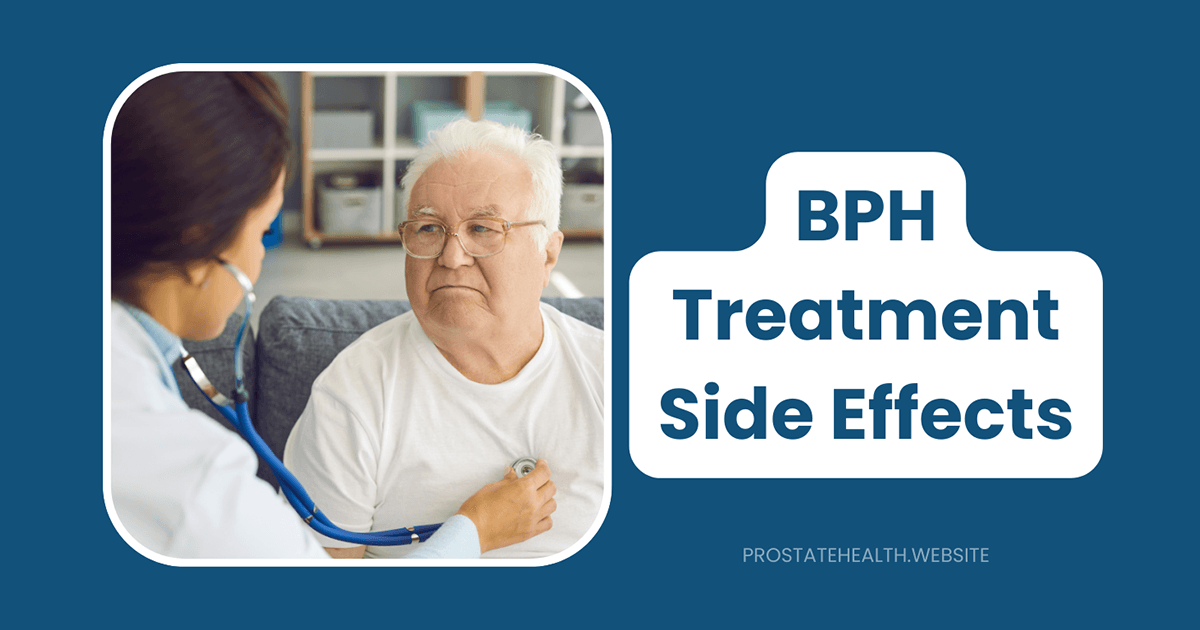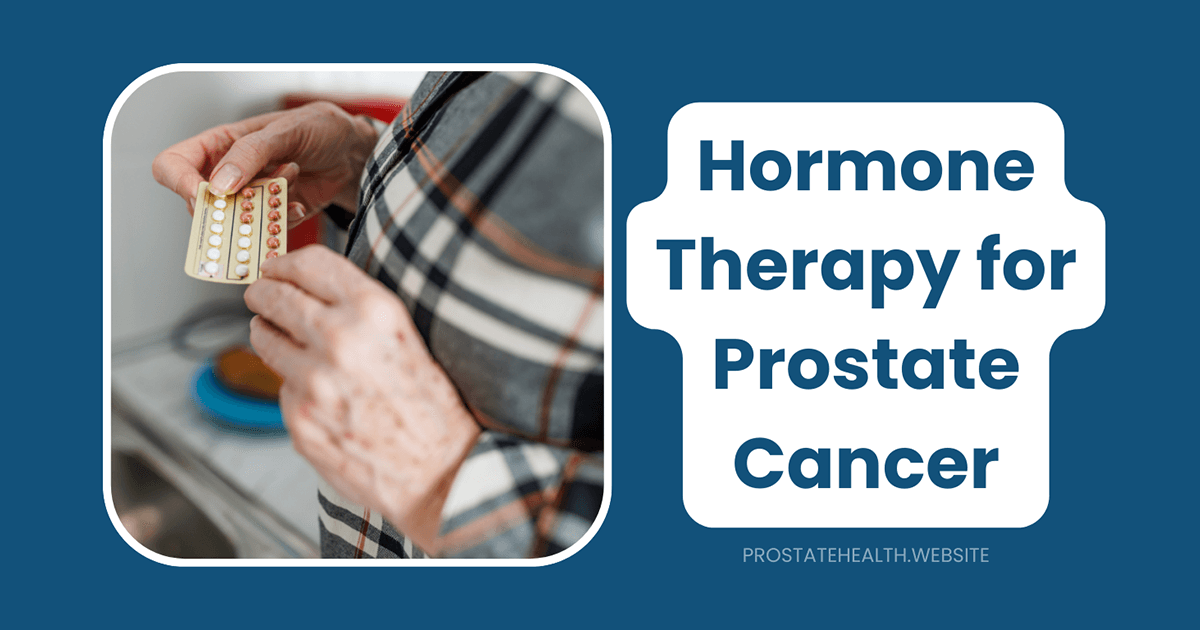Water Vapor Therapy for BPH: How It Works
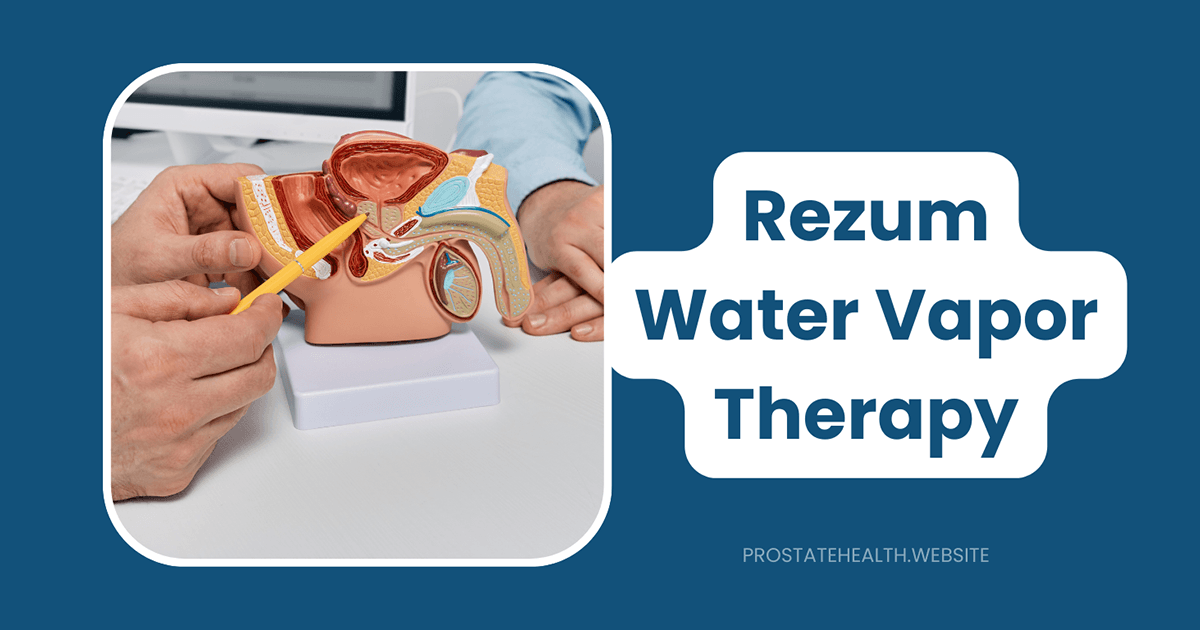
If you’re one of the millions of men dealing with benign prostatic hyperplasia (BPH), you know how frustrating the symptoms can be—frequent urination, weak stream, nighttime bathroom trips, and the constant feeling that your bladder isn’t quite empty. While medications help many men, they don’t work for everyone and often come with unwanted side effects.
Enter water vapor therapy, marketed as Rezūm™—an innovative, minimally invasive treatment that’s changing how we approach BPH. Since receiving FDA clearance in 2015, this procedure has helped thousands of men find relief from BPH symptoms without major surgery or permanent sexual side effects.
“Water vapor therapy represents a significant advancement in BPH treatment,” explains Dr. James Wilson, urologist. “It offers an effective middle ground between medications and more invasive surgical options, with the added benefit of preserving sexual function.”
This comprehensive guide explores how water vapor therapy works, what to expect during the procedure and recovery, and how it compares to other BPH treatments.
Understanding BPH and the Need for Treatment
Before diving into water vapor therapy, let’s understand the condition it treats. Benign prostatic hyperplasia (BPH) is a non-cancerous enlargement of the prostate gland that commonly affects men as they age. By age 60, about 50% of men experience symptoms, and by age 85, this number jumps to 90%.
When the prostate enlarges, it can press against the urethra and bladder, causing urinary symptoms such as:
- Frequent urination, especially at night
- Weak urine stream
- Difficulty starting urination
- Feeling that the bladder isn’t completely empty
- Urgency to urinate
- Straining during urination
Left untreated, BPH can lead to complications including urinary tract infections, bladder stones, bladder damage, and kidney damage. Finding an effective treatment is essential for both symptom relief and preventing these complications.
The Science Behind Water Vapor Therapy
Water vapor therapy (Rezūm) harnesses a simple but powerful principle: the thermal energy naturally stored in water vapor (steam).
How It Works: The Process Explained
- Energy Delivery: The procedure uses radiofrequency energy to heat sterile water and create vapor (steam).
- Targeted Application: This vapor is delivered directly into the prostate tissue through a specialized device inserted through the urethra.
- Energy Transfer: When the vapor contacts the prostate tissue, it rapidly condenses back to water, releasing its stored thermal energy.
- Cell Disruption: This energy disrupts the cell membranes of the prostate tissue in the treatment area.
- Immune Response: The body’s natural immune response then gradually absorbs the dead cells over time.
- Tissue Shrinkage: As this tissue is absorbed, the prostate shrinks, reducing pressure on the urethra and allowing urine to flow more freely.
“What makes water vapor therapy unique is its precision,” notes Dr. Wilson. “The vapor only travels about 1-2 millimeters from the injection site, allowing us to target specific areas of the prostate while minimizing damage to surrounding tissues.”
The Technology: Inside the Rezūm System
The Rezūm system consists of several components:
- Generator: Creates the radiofrequency energy that heats the water
- Delivery Device: A handheld tool that the urologist uses to deliver the vapor
- Needle Electrode: Extends from the delivery device into the prostate tissue
- Cystoscope: Allows the urologist to visualize the prostate during treatment
Each vapor “injection” lasts just 9 seconds, delivering approximately 0.42 mL of vapor to the treatment area. Depending on the size and configuration of your prostate, you may need 4-8 injections to treat the entire enlarged area.
The Procedure: What to Expect
Water vapor therapy is typically performed in a urologist’s office or outpatient facility and doesn’t require general anesthesia.
Before the Procedure
Evaluation and Testing:
- Physical examination
- Urinalysis to rule out infection
- PSA blood test
- Uroflowmetry to measure urine flow
- Cystoscopy to examine the urethra and prostate
- Prostate ultrasound to determine size and shape
Preparation:
- You may need to temporarily stop blood thinners (discuss with your doctor)
- Antibiotics are typically prescribed before the procedure
- You’ll be asked to avoid food and drink for several hours before the procedure
- Arrange for someone to drive you home afterward
During the Procedure
Step 1: Anesthesia and Positioning
- Local anesthesia with sedation is typically used
- You’ll lie on your back with your legs in stirrups
Step 2: Cystoscopy
- A small scope is inserted through the urethra to visualize the prostate
Step 3: Vapor Delivery
- The Rezūm delivery device is inserted through the scope
- The needle is deployed into the prostate tissue
- 9-second bursts of vapor are delivered to multiple locations in the prostate
- Each lobe of the prostate is treated with 1-3 injections, depending on size
Step 4: Completion
- The scope is removed
- A catheter is typically placed to help urine drain during the initial healing phase
- The entire procedure usually takes 10-15 minutes (though your appointment will be longer)
“The procedure itself was quick and relatively comfortable under local anesthesia with sedation,” shares Michael, 62, who underwent Rezūm in 2024. “I felt some pressure but no significant pain during the treatment.”
Recovery and Results: What to Expect
Understanding the recovery timeline and expected results can help you prepare for water vapor therapy.
Immediate Recovery (1-7 days)
- Catheterization: Most patients require a catheter for 3-7 days to help urine drain while the prostate heals
- Discomfort: Some burning during urination, pelvic discomfort, and blood in urine are common
- Activity: Light activities can be resumed, but avoid strenuous exercise, sexual activity, and long car rides
- Medications: Antibiotics to prevent infection and anti-inflammatories to reduce discomfort are typically prescribed
Short-term Recovery (1-6 weeks)
- Symptom Fluctuation: BPH symptoms may initially worsen due to swelling before improving
- Gradual Improvement: Most men return to their baseline symptoms by 2-4 weeks
- Activity: Normal activities can typically be resumed after 1-2 weeks
- Follow-up: Your doctor will likely schedule a follow-up appointment around 2 weeks after the procedure
Long-term Results (1-3 months and beyond)
- Continued Improvement: Symptoms continue to improve as the body absorbs the treated tissue
- Maximum Benefit: Most patients experience maximum improvement around 3 months post-procedure
- Medication Reduction: Over 90% of patients are able to discontinue BPH medications
- Durability: Clinical studies show results lasting 5+ years, with only 4.4% of patients requiring surgical retreatment within 5 years
“I started noticing improvement about three weeks after my procedure,” reports James, 58. “By three months, my symptoms had improved dramatically. I was urinating with a strong stream and only getting up once at night instead of 3-4 times.”
The Results: What the Research Shows
Clinical studies on water vapor therapy show impressive and durable results:
- Symptom Improvement: Average 50% reduction in International Prostate Symptom Score (IPSS)
- Flow Rate Improvement: Significant increase in urinary flow rate
- Quality of Life: Substantial improvements in quality of life scores
- Sexual Function Preservation: No negative impact on erectile function and minimal risk (1-2%) of retrograde ejaculation
- Durability: 5-year data shows sustained symptom improvement with low retreatment rates
- Medication Discontinuation: Over 90% of patients able to stop taking BPH medications
Ideal Candidates for Water Vapor Therapy
Water vapor therapy isn’t right for everyone. Understanding who benefits most from this approach is crucial:
Good Candidates Include:
- Men aged 50 and older with BPH symptoms
- Those with prostates between 30-80cc in size (though some larger prostates may be treated)
- Men who have failed or cannot tolerate BPH medications
- Patients seeking a minimally invasive option with quick recovery
- Those who want to preserve sexual function
- Men with median lobe enlargement (which some other minimally invasive treatments can’t address)
Less Suitable Candidates Include:
- Men with very large prostates (>120cc)
- Those with active urinary tract infections
- Patients with certain urethral conditions that prevent insertion of the delivery device
- Men with severe heart disease or implanted cardiac devices
- Those with certain neurological conditions affecting the bladder
“Patient selection is key to success with water vapor therapy,” notes Dr. Wilson. “For the right candidate, it offers an excellent balance of effectiveness, safety, and quality of life preservation.”
Benefits of Water Vapor Therapy
Water vapor therapy offers several distinct advantages over other BPH treatments:
1. Preservation of Sexual Function
One of the most significant benefits is the preservation of sexual function:
- Erectile function is preserved: No impact on ability to achieve erections
- Minimal risk of retrograde ejaculation: Only 1-2% of men experience this side effect (compared to 75%+ with surgical options)
- Ejaculatory volume is maintained: Most men notice no change in ejaculation
2. Minimally Invasive Approach
- No incisions or cutting of tissue
- No removal of prostate tissue
- Performed under local anesthesia with sedation
- Outpatient procedure with no hospital stay
3. Effective Symptom Relief
- Significant improvement in urinary symptoms
- Durable results lasting 5+ years
- Ability to treat median lobe enlargement
- Effective across a wide range of prostate sizes
4. Quick Recovery
- Most men return to normal activities within days
- Less post-procedure pain compared to surgical options
- Short catheterization period compared to some alternatives
5. Medication Independence
- Over 90% of patients able to discontinue BPH medications
- Freedom from medication side effects and costs
“The best part about Rezūm was being able to stop my BPH medications,” shares Robert, 65. “I had been experiencing dizziness and fatigue from the medications, and now I’m completely medication-free with better symptom control than I had on the pills.”
Potential Side Effects and Limitations
While water vapor therapy has many advantages, it’s important to understand potential limitations:
Common Side Effects
Most side effects are mild to moderate and resolve within 2-4 weeks:
- Dysuria (painful urination): Experienced by many patients initially
- Hematuria (blood in urine): Common but typically resolves within days to weeks
- Urinary frequency/urgency: Often temporary as the prostate heals
- Pelvic discomfort: Usually mild and improves within days
- Blood in semen: May persist for several weeks
Rare Complications
Serious complications are uncommon but may include:
- Urinary retention: May require extended catheterization
- Infection: Requiring antibiotics
- Urethral stricture: Narrowing of the urethra requiring additional treatment
- Retrograde ejaculation: Occurs in approximately 1-2% of patients
Effectiveness Considerations
- Delayed results: Unlike some treatments, maximum benefit takes 2-3 months
- Initial symptom worsening: Symptoms may temporarily worsen before improving
- Less effective for very large prostates: Though it can be used for prostates up to 80-100cc
“I experienced some burning during urination and saw blood in my urine for about a week,” shares Thomas, 60. “But these symptoms were manageable with over-the-counter pain relievers and gradually improved. By week three, I was feeling much better.”
Comparing Water Vapor Therapy to Other BPH Treatments
Understanding how water vapor therapy compares to other BPH treatments can help you make an informed decision:
Water Vapor Therapy vs. Medications
Advantages over medications:
- No daily pill regimen
- No medication side effects (dizziness, fatigue, sexual dysfunction)
- More effective symptom relief for many men
- One-time procedure vs. ongoing medication costs
Disadvantages compared to medications:
- Invasive procedure with recovery period
- Higher upfront cost (though may be cost-effective long-term)
- Potential procedural complications
Water Vapor Therapy vs. UroLift (Prostatic Urethral Lift)
Recent head-to-head studies comparing these treatments show:
Water vapor therapy advantages:
- More effective for median lobe enlargement
- Potentially more durable long-term results
- Lower retreatment rates in some studies
- May be more effective for larger prostates
UroLift advantages:
- Faster recovery period
- Less catheterization (1 in 42 UroLift patients vs. 10 in 37 Rezūm patients)
- Better preservation of sexual function in early recovery
- Less interference with daily activities due to pain or bleeding
Water Vapor Therapy vs. TURP (Transurethral Resection of the Prostate)
Water vapor therapy advantages:
- Outpatient procedure with faster recovery
- Preservation of sexual function
- Lower risk of complications
- Shorter catheterization time
TURP advantages:
- More complete removal of obstructing tissue
- Greater improvement in urinary flow
- More durable long-term results
- Better for very large prostates
Recovery Tips and Timeline
These practical tips can help ensure a smooth recovery after water vapor therapy:
Recovery Timeline
| Timeframe | What to Expect |
| Days 1-7 | Catheter in place, mild discomfort, blood in urine |
| Weeks 1-2 | Catheter removed, symptoms may temporarily worsen |
| Weeks 2-4 | Return to baseline symptoms, gradual improvement begins |
| Weeks 4-8 | Continued improvement in symptoms |
| Months 2-3 | Maximum benefit typically achieved |
Tips for a Smooth Recovery
- Stay hydrated: Drink 8-10 glasses of water daily to help flush your bladder and reduce blood in urine
- Avoid irritants: Limit caffeine, alcohol, and spicy foods during initial recovery
- Take it easy: Gradually increase activity levels as comfort allows
- Take medications as prescribed: Complete your full course of antibiotics
- Be patient: Remember that maximum improvement takes time as your body absorbs the treated tissue
“The recovery was manageable, but it did require some patience,” shares William, 63. “The first two weeks were a bit uncomfortable, but by week three I was starting to notice improvement. By three months, the results were remarkable.”
Making Your Decision: Is Water Vapor Therapy Right for You?
When considering whether water vapor therapy is the right choice for your BPH symptoms, consider these key factors:
1. Symptom Severity
- Mild to moderate symptoms: Water vapor therapy may provide sufficient relief
- Severe symptoms or retention: More invasive options might be more appropriate
2. Prostate Size and Anatomy
- Prostate size 30-80cc: Ideal range for water vapor therapy
- Prostate >80cc: Can still be treated but may require more injections
- Median lobe enlargement: Water vapor therapy can effectively treat this
3. Priorities and Preferences
- Sexual function preservation: Water vapor therapy excels in this area
- Recovery time: Consider the need for catheterization and temporary symptom worsening
- Durability of results: Weigh the potential need for retreatment against benefits
4. Questions to Ask Your Doctor
- What is my prostate size and is it suitable for water vapor therapy?
- Given my specific symptoms and anatomy, what success rate would you expect?
- How many water vapor therapy procedures have you performed?
- What are the alternatives in my specific case?
- What complications have your patients experienced?
“I chose water vapor therapy after carefully weighing all my options,” explains James, 58. “The preservation of sexual function was important to me, and I liked that it could treat my median lobe enlargement, which UroLift couldn’t address. The temporary catheter was a small price to pay for the long-term benefits.”
Conclusion: A Revolutionary Approach to BPH Treatment
Water vapor therapy represents a significant advancement in BPH treatment, offering a minimally invasive option that preserves sexual function while providing meaningful, long-lasting symptom relief. By harnessing the natural energy stored in water vapor, this innovative approach effectively reduces prostate tissue with minimal collateral damage.
While not the right choice for every man with BPH, for suitable candidates—particularly those concerned about sexual side effects or wanting to avoid more invasive surgery—water vapor therapy offers an attractive balance of effectiveness, safety, and quality of life preservation.
As with any medical procedure, the key to satisfaction is having realistic expectations and making an informed decision in partnership with your healthcare provider. By understanding the benefits, limitations, and recovery process associated with water vapor therapy, you can approach your BPH treatment with confidence and clarity.
Frequently Asked Questions
Yes, most insurance plans, including Medicare, cover water vapor therapy when medically necessary. It’s always best to check with your specific insurance provider regarding coverage details.
Clinical studies show durable results for 5+ years, with only 4.4% of patients requiring surgical retreatment within 5 years. Many patients continue to experience relief beyond this timeframe.
Over 90% of patients are able to discontinue BPH medications after water vapor therapy. Your doctor will advise you on when it’s appropriate to stop these medications.
Most men can return to desk jobs within a few days. For more physically demanding work, you may need to wait 1-2 weeks.
Yes, water vapor therapy can be repeated if necessary, though most men experience long-lasting relief from a single procedure.
Water vapor therapy is less invasive than laser procedures like HoLEP or GreenLight PVP, with faster recovery and better preservation of sexual function. However, laser procedures may provide more complete tissue removal and better results for very large prostates.
External Resources:
- American Urological Association – BPH Guidelines
- Urology Care Foundation – Water Vapor Therapy
- FDA Information on Rezūm System


